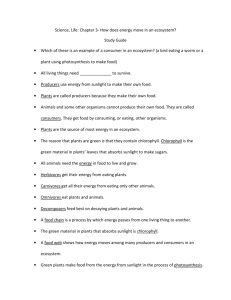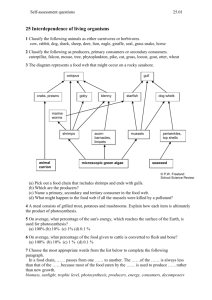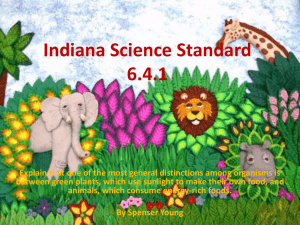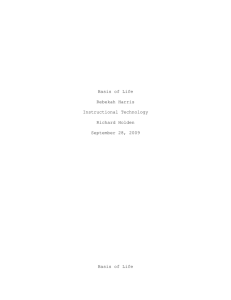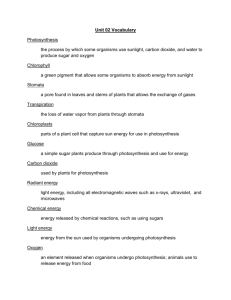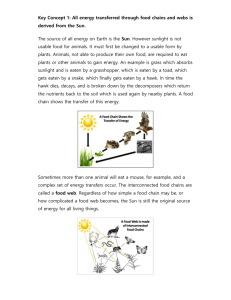Ocean Zonation - Bowie Aquatic Science
advertisement
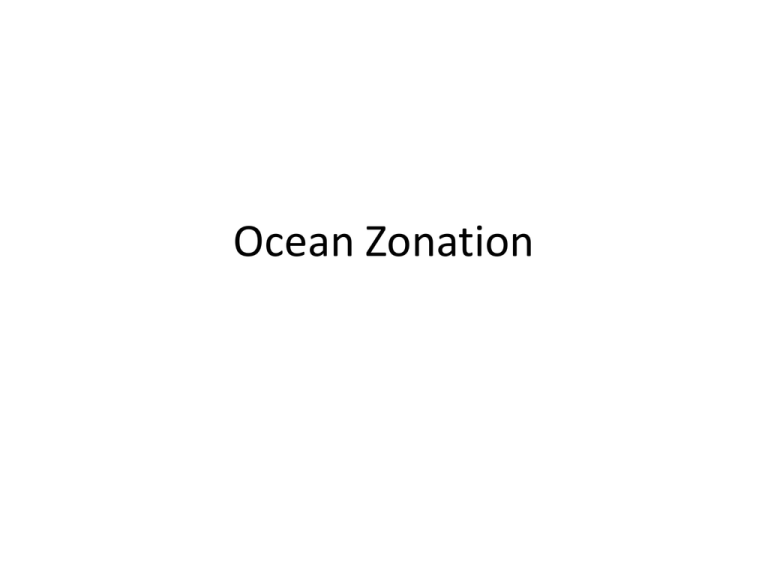
Ocean Zonation Pelagic Zone • Water Environment • Divided into the Neritic Zone and Oceanic Zone Oceanic Zone • Open ocean away from the direct influence of land Neritic Zone • Coastal zone or the sublittoral zone. • Shallow water zone where light penetrates to the bottom. Benthic Zone • Sea Floor Environment Epipelagic • • • • A.K.A.:Photic, Euphotic or Sunlit Zone Depth: approximately 200 meters deep Depends on the turbidity of the water General Characterisitics: Top of the ocean. Generally receives lots of sunlight and relatively warmer temperatures. High D.O. • Energy and Producers: the main source of energy is the sun. Phytoplankton and macroalgae are the main producers but there are a few marine plants as well. • Organisms Adaptations: countershading- light on bottom and dark on the top. Mesopelagic • A.K.A.: Disphotic or twilight zone. • Depth: 200- 1000 meters • General Characterisitics: receives some sunlight. Contains the thermocline and is between 4-20 degrees Celsius. Pressure can be up to 1,470 psi. Less D.O. than the photic zone • Energy and Producers: Not enough sunlight for photosynthesis. Relies on plant matter and algae that fall into the zone. Most animals are predators and prey on others in the zone. • Organisms Adaptations: Large eyes, small, dark and thin. Bioluminescence is used to lure prey and for camouflage. Counterillumination: lit on bottom not lit on top. Large teeth and jaws. Bathypelagic • A.K.A.:Midnight or Aphotic Zone • Depth: 1,000- 4,000 meters • General Characterisitics: No sunlight. Temperatures are nearly freezing. The pressure is extremely high • Energy and Producers: No photosynthesis. Organisms rely heavily on organic matter that drift down from the photic zone. Most organisms are predators and scavengers. • Organisms Adaptations: Colored red and black for camouflage. Abyssopelagic • A.K.A.: The Abyss, Midnight Zone (Greek- for no bottom) • Depth: 4,000 – 6,000 meters • General Characterisitics: No sunlight. Temperatures are nearly freezing. The pressure is extremely high up to 11,000 psi • Energy and Producers: No photosynthesis. Chemosynthesis can occur here (producing sugars from chemicals instead of sunlight). Most organisms are predators. • Organisms Adaptations: Colored red and black for camouflage. Hadalpelagic Zone • A.K.A.: The Hadal Zone or Trenches (Greek- named after the god Hades) • Depth: 6,000 to -10,000 (deepest is the Mariana Trench 10,911 meters) • General Characterisitics: No sunlight. Temperatures are nearly freezing. The pressure is extremely high up to 16,000 psi • Energy and Producers: No photosynthesis. Chemosythesis can occur here (producing sugars from chemicals instead of sunlight). Most organisms are predators. • Organisms Adaptations: have to withstand extreme pressure. Dark or clear. Mostly invertebrates Intertidal/Littoral Zone • A.K.A.: • Width: From high tide to low tide • General Characterisitics: at times it is submerged and others it is exposed. High D.O. and nutrients. Lots of Sunlight • Energy and Producers: Photosynthesis, mainly algae and some plants • Organisms Adaptations: remember from the tide notes. Subtidal/Sublittoral/Neritic Zone • A.K.A.: the coastal zone • Width: extends from the low tide mark to the shelf break, the outer most edge of the continental shelf. (avg. 150 meters) • General Characterisitics: Lots of sunlight and nutrients. High D.O. • Energy and Producers: Photosythesis. Phytoplankton and macroalgae (kelp). • Organisms Adaptations: Epifauna: live on top of sediment and Infauna: burrow or dig in sediment
